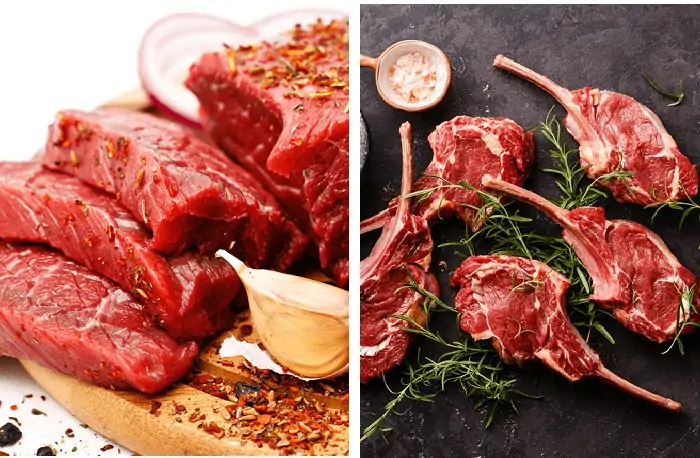Veal and beef taste different from each other even though they come from the same animal. While beef holds a sharp flavor, veal has a much lighter taste. Not only this, the texture and appearance also differ to a great extent.
The veal vs. beef taste debate can leave you with an unsettling urge to try them out. Young animals from any species come with a subtle flavor and tender texture. Veal has less fat content compared to beef. It also affects their tastes so much.
Many recipes in this world need veal to get completed. Some others can’t do well without beef. Their unique taste and texture make them irreplaceable in such situations.
Veal vs. Beef Taste
Veal and beef have almost entirely different flavors. As veal comes from young calves, it is milder in taste. Beef has a sharp flavor that can stand alone in dishes. The muscles of young animals do not develop completely until they mature. So they tend to have a tender texture compared to beef. The same factor leaves veal juicier than beef.
The neutral-tasting veal often gets compared to pork, not beef. The subtle flavors of this meat burst in your mouth, releasing rich umami. The beef flavor is not that simple. It can tantalize your taste buds with a flavorous treat that combines fatty, meaty tastes. Veal and beef pair well with carbohydrate-rich food items like rice and potatoes.
The texture of veal is velvety and delicate. This finely-grained meat has differences in taste according to the age of the calves as well. For example, bob veal comes from claves that are only a few days old. It has a jelly-like texture and the mellowest flavor. You can call the taste of veal refreshing or pleasant. The beef flavor is deep and may feel overwhelming according to some cooking styles.
The rearing environment can affect how beef or veal tastes. Premium beef like the Wagyu can taste buttery as they get reared in stress-free environments. They cannot get compared with ordinary beef that doesn’t get much attention or care while raised. Like this, free-range grass-fed veal is more flavorsome.
Veal needs to get cooked well or it will have a sour taste. Beef, as you know, can be eaten raw, and medium-cooked as well.
Which is better in Taste? Veal or Beef
As stated earlier, there are places where beef and veal cannot get replaced with each other. The preference for beef and veal gets influenced by cooking methods and personal choices. The soft, juicy veal is beloved by most people who have tasted it. But then, the more robust, fatty flavors of beef have always maintained their popularity.
Veal is not used as widely as beef all over the world. Low production and questions on cruelty towards young animals are the main reasons. They are both tasty options. So the question above doesn’t have a clear-cut answer.
Nutritional Values of Veal and Beef
Beef and veal have slightly different nutritional profiles. They are both calorie-rich, protein-rich food sources, though veal has a lower quantity of these. The fat profile of veal is more favorable compared with beef.
Beef contains more iron than veal, an important aspect to note. At the same time, veal comes with more magnesium and phosphorus. They both have comparable amounts of calcium. Veal is easily digestible compared to beef.
Red meat gets considered a good source of B vitamins. Veal is better compared to beef in this department. It also contains higher amounts of vitamin E. But then beef contains more vitamin A and vitamin B12. Vitamin B6 and K amounts are comparable. But they both don’t contain any vitamin C or D.
Conclusion
People expect beef and veal to taste similar, as both come from the same animal. But they both have different characteristics. Veal is lighter in flavor and more tender than beef. For the same reason, one of them cannot replace the other in a recipe.
Veal has a lower amount of cholesterol than beef. Another factor affecting the taste is marbling. As veal doesn’t exhibit marbling like beef, it lacks fatty flavor. As a low-fat alternative, it is considered a healthier option over beef. Both contain many micronutrients and offer rich protein sources.

